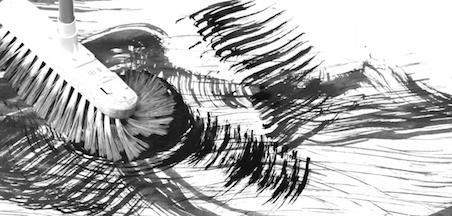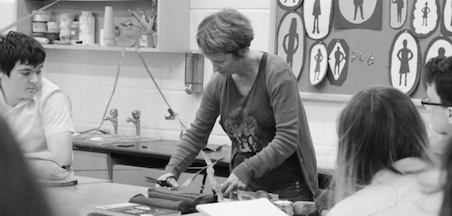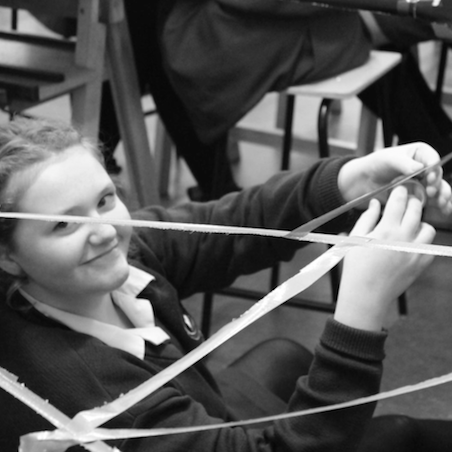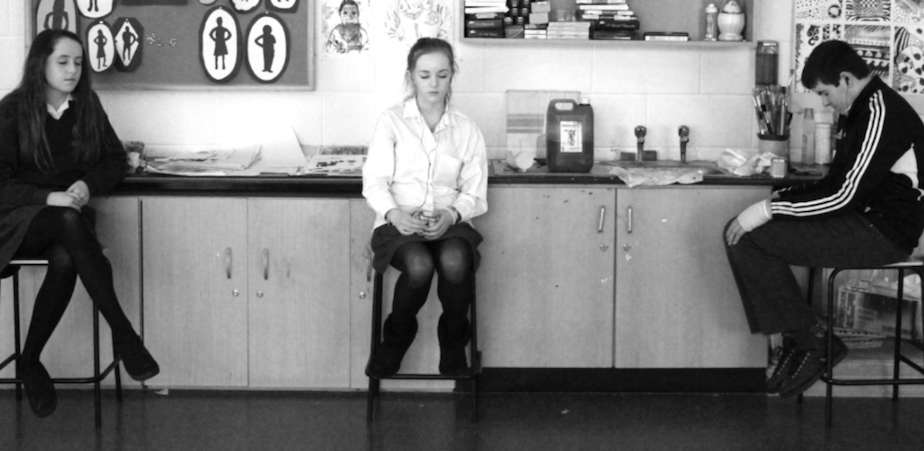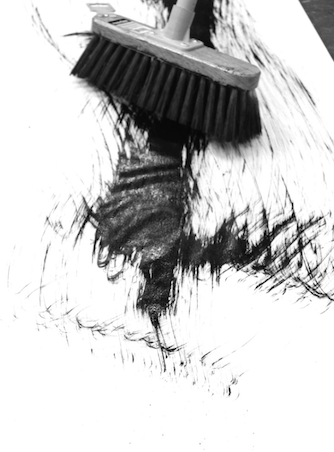Refine by Region
Refine by Art Form
Refine by School Level
Cluas le hÉisteacht
Cluas le hÉisteacht (c) Maree Hensey
About the project
Cluas le hÉisteacht was a year long process-led engagement and partnership between the second year students of Pobalscoil Chorca Dhuibhne, Dingle, their art teacher Brenda Ní Fhrighill and artist Maree Hensey.
The project communicated visually a process led approach, collaboration and the language of drawing. Brenda and Maree provided an environment that was safe and supportive for creative expression. Participants were given the opportunity to make their own individual response to the materials presented and given the confidence to continue that individual creative journey.
The students were introduced to ways of mark making using a range of exploratory techniques and materials working both large and small scale. Over the duration of the project they gained a confidence in experimental expressive mark making and working collaboratively.
Arriving at the concept: Artist Maree Hensey
Brenda and I have been working together since 2008. We know each other very well and understand the way we work. When we are planning a project and an approach this depth of understanding and trust allows us to take on projects that are challenging and have an element of risk.
So why sound? How did we arrive at the concept?
It took several phone calls and a few sessions over dinner to arrive at a concept that rang true to both Brenda and I. Looking at the profile of the participants they are constantly plugged in. Our impetus was to facilitate an alternative creative experience.
Concept: Listening.
Through out the process students learned to:
- tune into active rather than passive listening.
- remove all stimulus and immerse the students in the sounds of their surrounding landscape.
- isolate sounds, to make recordings, to listen again to the tone, the rhythm and quality of the sounds.
- be individual in their responses and selection of sounds.
- be comfortable in silence.
We began the journey by making sound recordings in the landscape e.g. lapping water, people walking, tractor engine, boat in the distance, dog barking, conversation. We listened to the layers of sound that are part of their local environment. Back in the art room we listened intently to a chosen sound and made drawing marks that expressed the rhythm, tone and quality of the sound.
The work made was sensitive, thought provoking and individual. Self-evaluation by students of their work was an integral part of the process. After each session students chose a word that best described their individual experience. These words became an integral part of the outcome where students made a collaborative experimental sound scape playfully sounding their chosen word.
Art teacher at Pobalscoil Chorca Dhuibhne Brenda Ní Fhrighill
The project has been a really important part of the whole academic and educational process. As a teacher I really appreciate the value of using Video Conferencing Technology and see the benefits that it has brought to my students. The possibility of collaboration with professional artists is no longer limited or defined by our location. The process led work has helped students to creatively develop their own unique voice and visual language. The students learned important skills in self-evaluation, communication, technique and confidence that will be useful across all other subjects in the curriculum.
About the process and how it evolved
Maree worked with the students over 2-3 days in the school. Brenda rearranged her schedule and the students so that they were available to work for 4-5 hours per day.
Following the experience of working in the school, Maree continued the contact and exploration over several weeks using video conferencing technology for sessions of 40 – 80 minutes. Maree is based in Dublin and the journey to Dingle was not realistic on a weekly basis.
Planning and evaluation was given a generous amount of time. We were in contact by phone at least twice a week.
The project started with field trips and mapping sounds. The recorded sounds were edited and processed. Sounds were selected and the process of visually expressing the sounds and the sentiment of the sound began through explorative mark making.
The enormous challenge was working in the abstract. The student’s experience of art was in the figurative as per the curriculum. In order for the participants to understand the process and the project each week, we compiled a list of words that described their interpretation of the process. The recording accompanying the video is a selection of these words.
The project ended beautifully where the students eliminated all sound and listened to their own internal rhythm. The images of the students with the earplugs connected to the box was their experience of listening to nothing but their own thoughts and nothingness.
The culmination was an installation in Gallararus Oratory, video projection and an external exhibit of large-scale drawings in the Gallarus visitors centre on the Dingle Peninsula. The oratory, situated in an area of natural beauty was an appropriate location in which to place work that was influenced by listening, silence and the surrounding environment. The exhibition gave a physical record and testimony to the creative processes.
Student Outcomes:
- Learned a variety of skills and techniques required in exploratory mark-making – an essential skill required within the art curriculum
- Exposure to contemporary artists that use experimental mark making
- Increased capacity to listen to external sounds and an appreciation of inner stillness that can arise with silence
- Increased concentration Learned skills in using sound equipment
- Exposure to and utilisation of IT and multimedia as an efficient and contemporary mode of communication.
- An appreciation of the value of a process led experience without the emphasis of a fixed or determined outcome.
- Gained practical experience and appreciation and understanding of installation work
- Greater capacity to work as part of a team
- Gained group ownership of the process and resulting exhibition.
- Increased confidence in presenting their work in public.
- Gained exposure to the work of a professional artist and an appreciation of the arts as a valid career option.
- Strong links with literacy
Spotlight
Artist(s):
Maree Hensey is a visual artist. Her practice encompasses drawing, sculpture and participatory art. At the heart of her work is the engagement and participation of community. As a primary source of information and guidance, she relies on evolving relationships over time, developing subtle collaborations to arrive at work that not only tells a story but also characterizes the community that recounts that story. She has successfully completed a number of Public Art Commissions, Site Specific Installations and Private Commissions. Her artworks are represented in public and private collections in Ireland, Britain, Canada Australia, France, Denmark and the USA.
Teacher(s):
Our motto is ‘Ar scáth a chéile a mhaireann na daoine'
The school provides a Post Primary education through the medium of Irish in the Corca Dhuibhne area. We are sincerely grateful to the staff, students, parents and everybody in the School Community for helping build a positive school ethos since our foundation in September 2007. We work together to ensure that young people entrusted in our care will grow and achieve their full potential in a respectful and caring environment.
Every effort is made to meet the spiritual and educational needs of the pupils in the School Community where the pastoral care of the students is of great importance.
See more at: http://pcd07.ie/
Other:
(Curator, agency, etc):
The Creative Engagement programme is co-funded by the Department of Arts Heritage and the Gaeltacht and the Department of Education and Skills. Each year projects are produced in schools ranging from theatre and film through to sculpture and music. A creative engagement happens when a local artist or arts group comes into the school and imparts their skills, knowledge and enthusiasm to the students. This partnership has mutual benefits to both artist and school.
The Creative Engagement programme strives to encourage creativity, initiative and expression in our students and to complement curricular learning in the arts , heritage and culture. NAPD envisions an education system energised through the arts and where creativity is a core activity in the post primary curriculum. NAPD is continuing to develop a partnership with the National Heritage Council. Michael Parsons of the Arts and Culture Committee is a member of the National Heritage Council.

Artist(s)
Maree Hensey
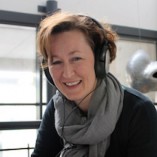
Teacher(s)
Brenda Ní Fhrighill
Artforms
School Level
School/
Participant Group
Pobalscoil Chorca Dhuibhne
No. Participants
20
Region
Age/Class
2nd Year Students
Dates
November 2014 - April 2015
Weblinks
Leading Agency
Creative Engagement
Key themes/ lines of enquiry
Drawing, Mark-making, Soundscape Installation.
The students isolated and documented sounds in their environment. Their engagement with the artist included virtual connection using SKYPE technology.
Curriculum Strands
Literacy, English, Irish, Art, ICT
The process led work has helped students to creatively develop their own unique voice and visual language.
Teacher Brenda Ní Fhrighill
